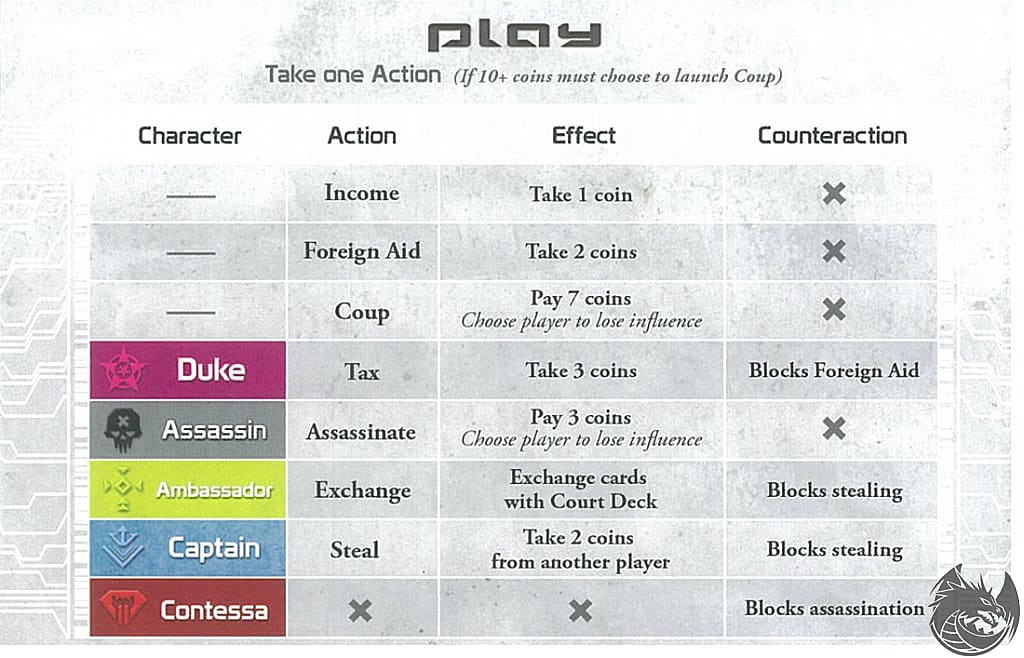The game that I will be analyzing is Coup, a card game by Indie Boards and Cards in which the goal is to be the last man standing. The game can be played by 2-6 players, is recommended for ages 13+, and can be played in a 15-min sitting. Each player starts out with two “influences” which are character cards that only the player themselves know. The motive of the game is to bluff in order to take advantage of different character powers, survive, and kill off everyone else’s characters. The type of fun this game fulfills is fellowship and challenge as it is a group game that is played with multiple people, and it is challenging in the sense that the players are competing against one another to be the last man standing.
There are five different characters in the game: Duke, Assassin, Ambassador, Captain, and Contessa. Each deck has two of each character and each of the characters have different actions and counteractions. Additionally, each player can only take one action during their turn. Therefore, there is plenty of places where this game exhibits exceptional use of balance.

The first aspect in which this game has to balance is the resource, which in Coup is in the form of coins. There are two primary ways to eliminate players in the game. One is to “Coup” which requires 7 coins. Nothing can overturn a coup and the player chosen must get rid of one influence card. Another way is to “Assassinate” by paying 3 coins which can only be performed if you have (or claim to have) an Assassin. The only player that can block an assassination is the Contessa. Just by looking at the cost of the actions we can see how powerful each is. The “Coup” requires 7 coins, while the assassination requires three.
Another form of balance is creating symmetry. Although every player starts out with two cards, each influence character also have different powers and in different contexts the advantages can become asymmetrical. Bluffing introduces a layer of symmetry as players can lie about their cards at any given time. The varying powers of each influence can also be described as “fruity” at time because it is hard to quantify each influence’s cost/benefit value as the powers come in handy at different times during the game. For example, most people would bluff about having a Duke at the beginning of the game to quickly gather more coins and at the end of the game, most people would bluff about having a Contessa to protect themselves.


